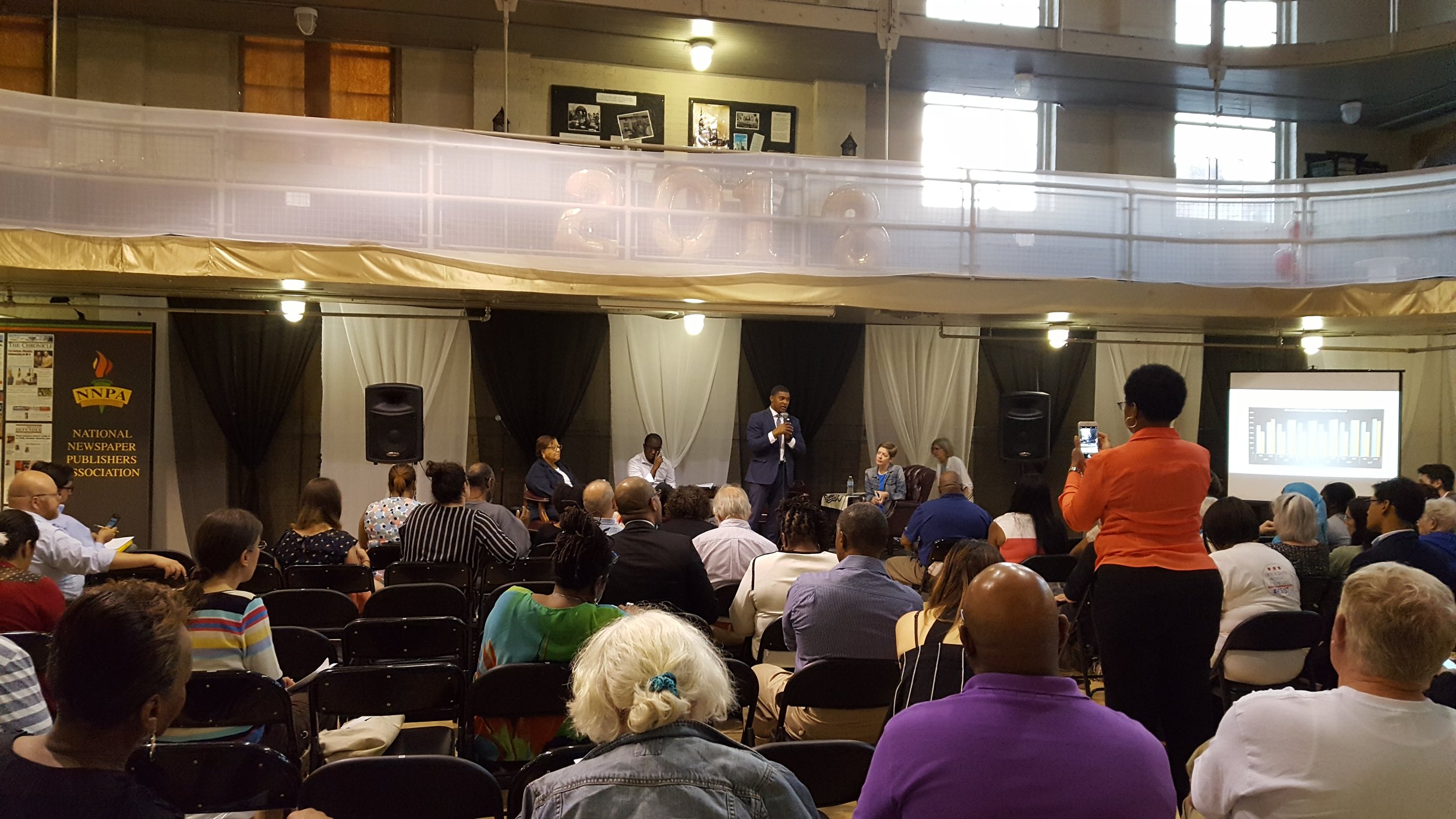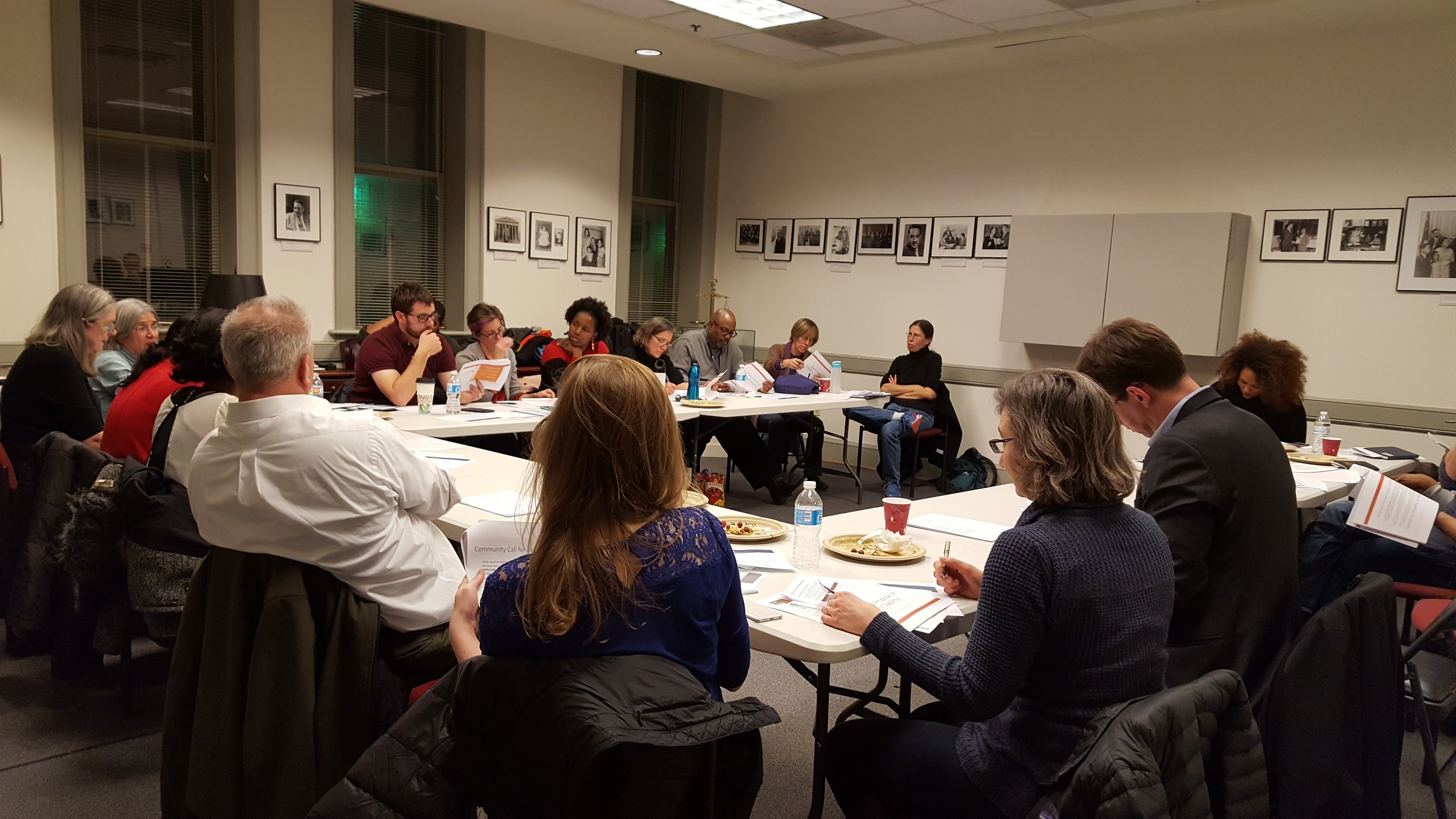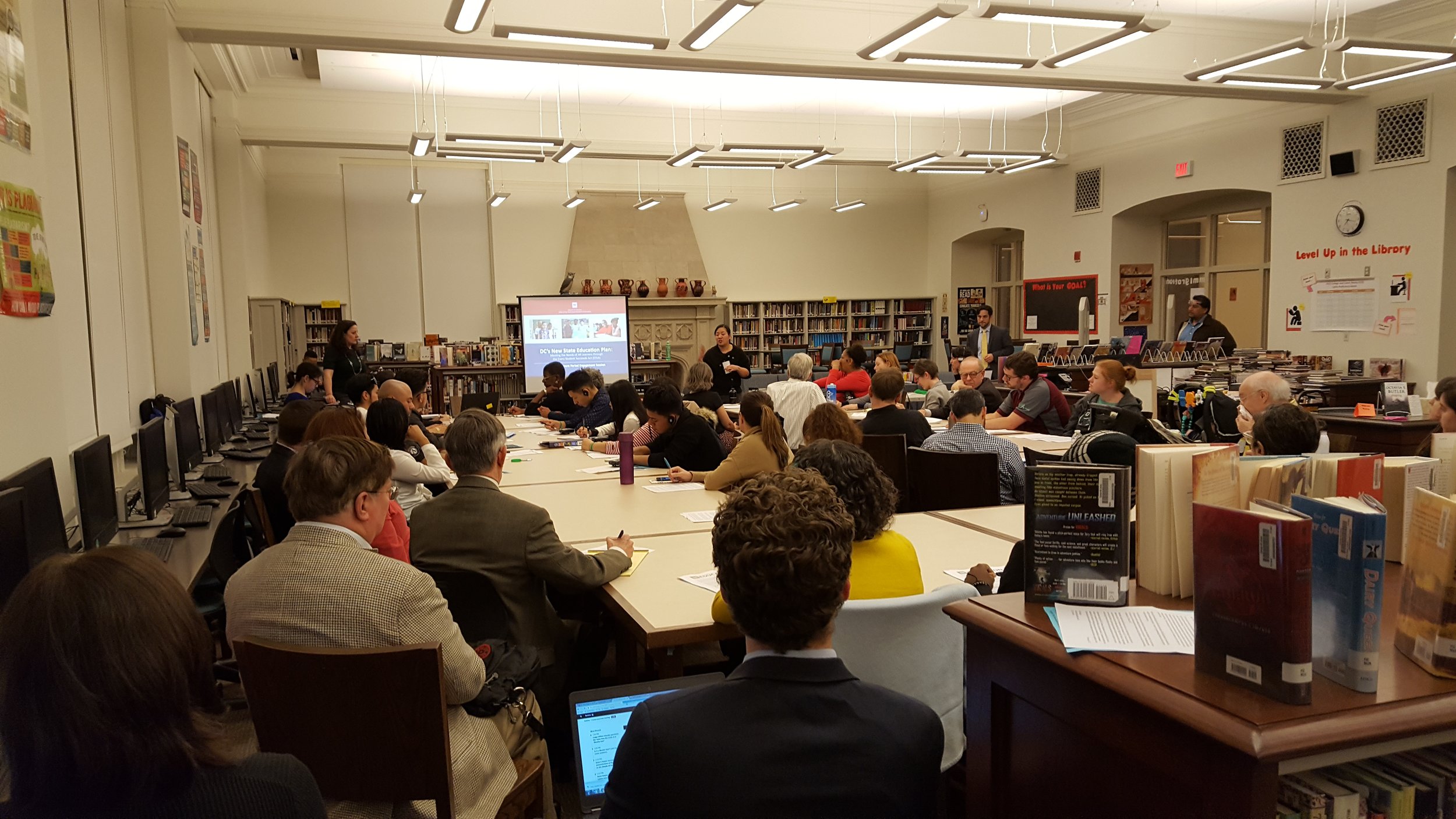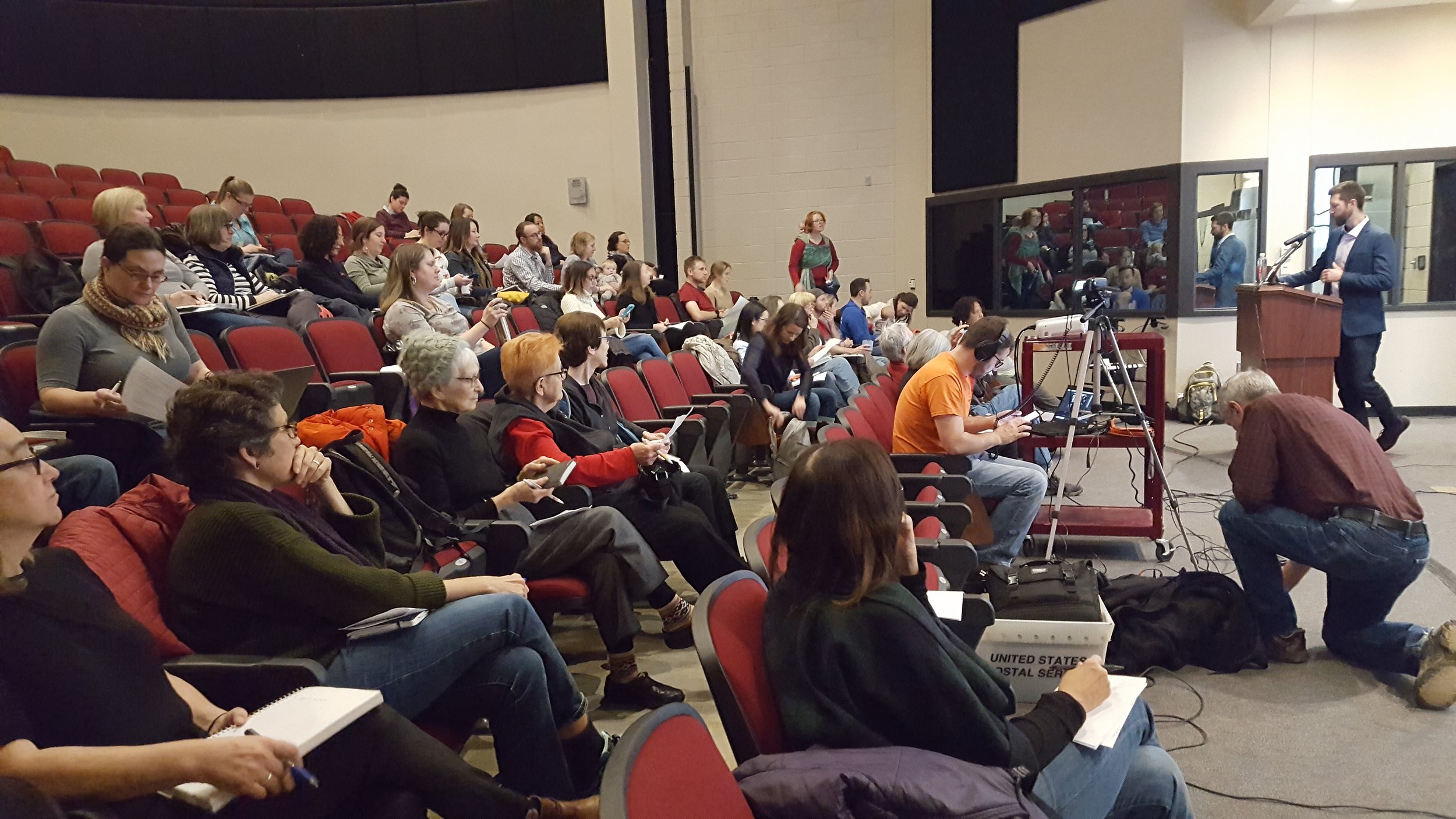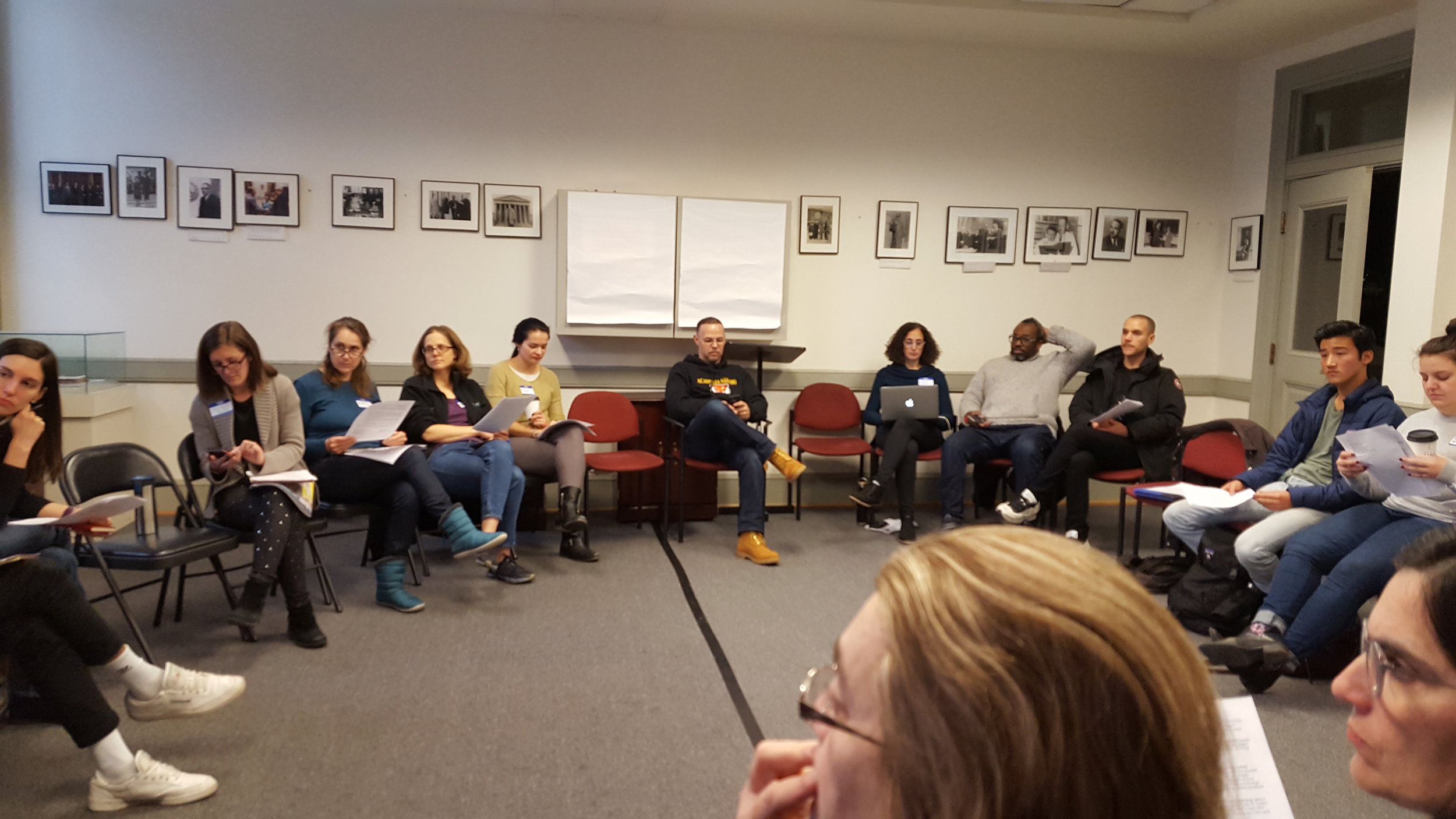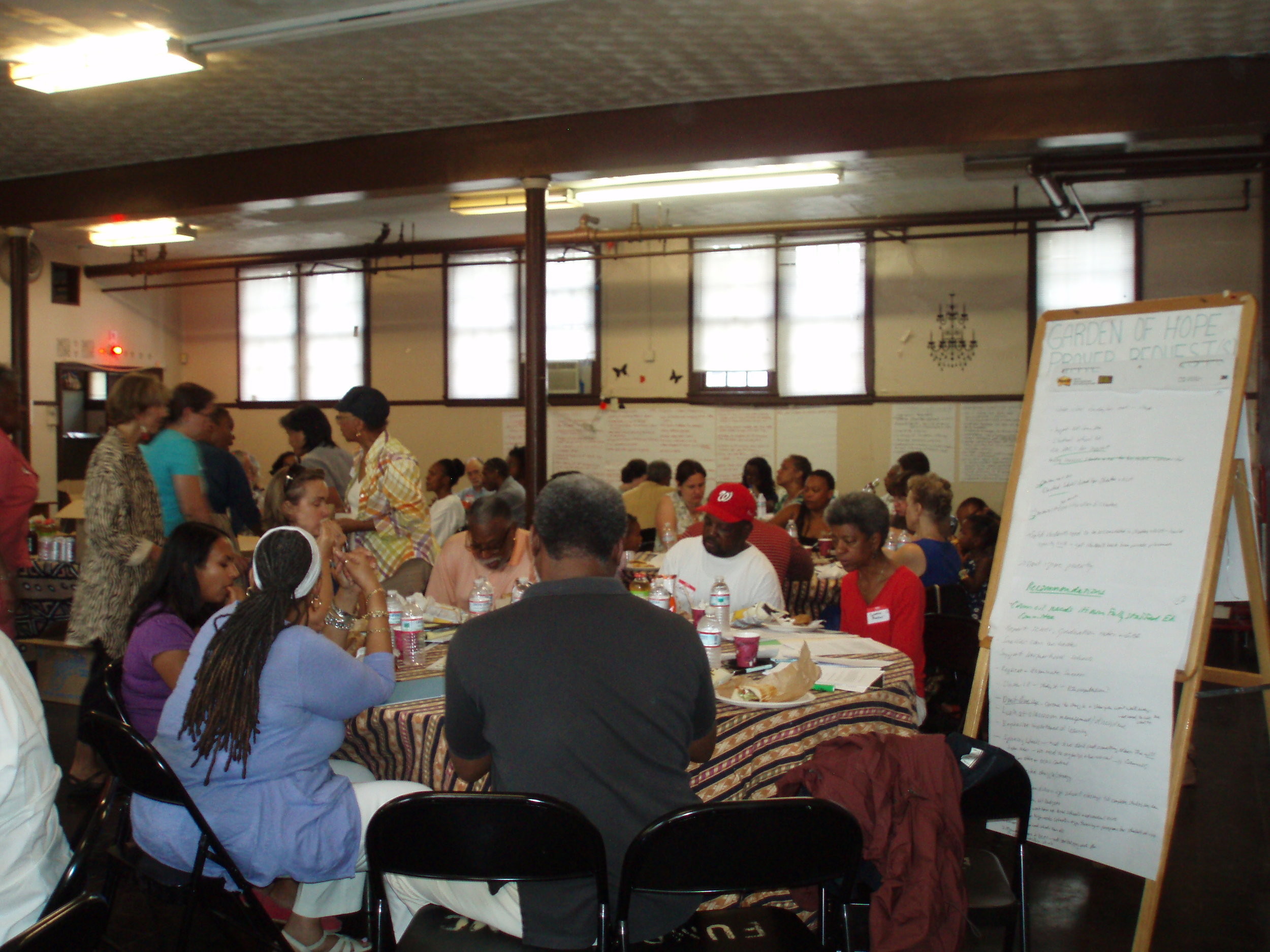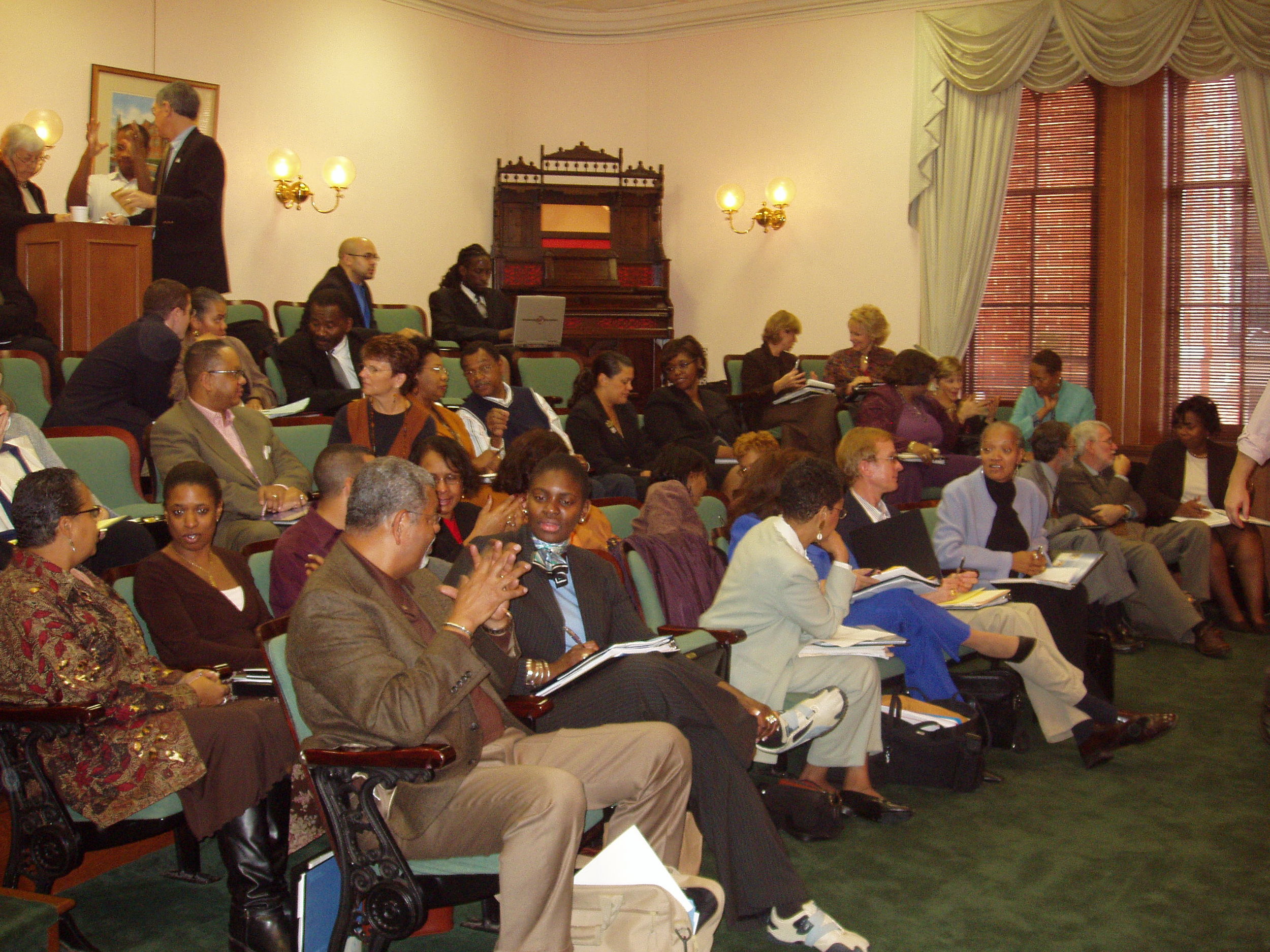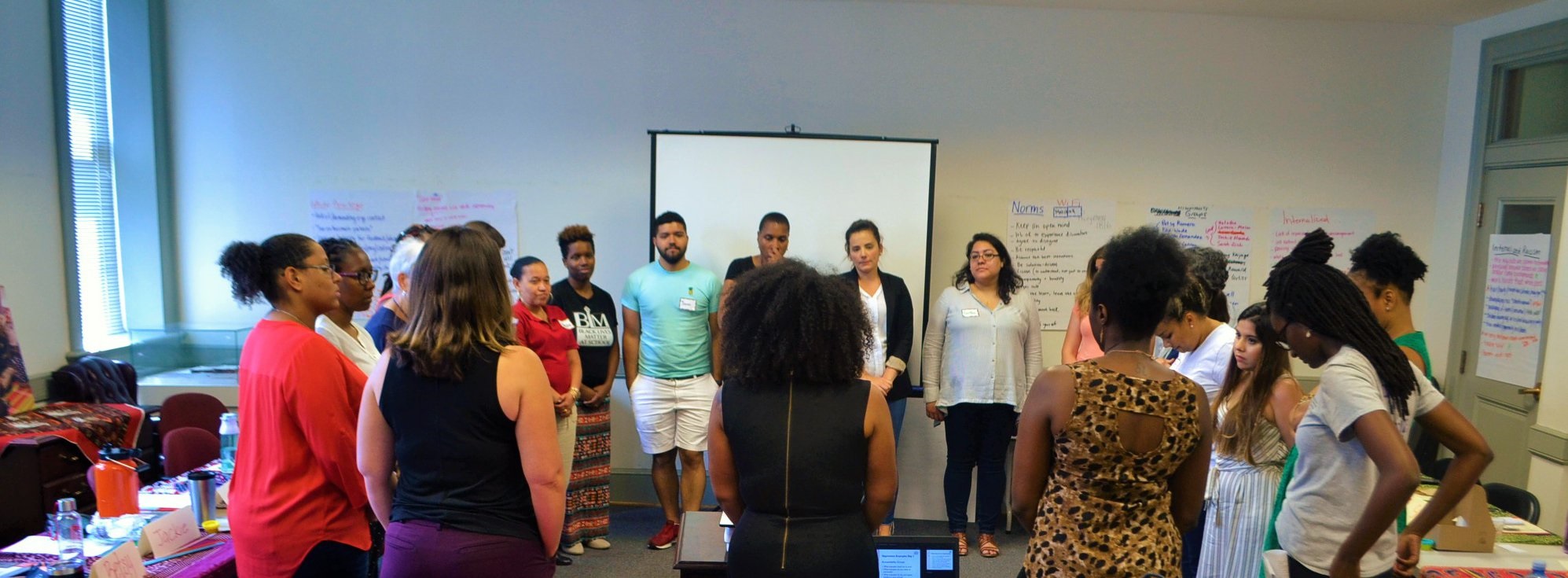WRITTEN STATEMENT OF MARY FILARDO, FOUNDER AND EXECUTIVE DIRECTOR, 21ST CENTURY SCHOOL FUND, WASHINGTON DC BEFORE THE HOUSE COMMITTEE ON EDUCATION AND LABOR ON APRIL 28, 2021
/WRITTEN STATEMENT OF MARY FILARDO, FOUNDER AND EXECUTIVE DIRECTOR, 21ST
CENTURY SCHOOL FUND, WASHINGTON DC
BEFORE THE HOUSE COMMITTEE ON EDUCATION AND LABOR ON APRIL 28, 2021
I will address the following three questions in my written testimony:
1. Does our country need a federal program that invests in rebuilding our elementary and secondary public school buildings and grounds?
2. Is the Reopen and Rebuild America’s School Act (RRASA) the right federal program to address these issues?
3. Does the Reopen and Rebuild America’s School Act belong in a major infrastructure package with roads, highways, and bridges and other major public works sectors?
1. DOES OUR COUNTRY NEED A FEDERAL PROGRAM THAT INVESTS IN REBUILDING OUR ELEMENTARY AND SECONDARY PUBLIC SCHOOL BUILDINGS AND GROUNDS? Yes, Because:
A. Public school buildings and grounds are mission critical for the education of children and youth, productivity of families, and the prosperity of our nation;
B. States need incentives to support greater equity in facilities condition and quality across school districts; and
C. States and local districts need help building their capacity for facilities data, planning, management, funding and oversight.
The federal government has neglected its duty to support our public school facilities for too long. This inaction makes the federal government complicit in growing the gaping disparities and inequities we have between the low wealth and high need districts and our nation’s new and more affluent communities. Given the critical role our nation’s public school buildings and grounds play in educating our children and youth and anchoring and supporting communities and neighborhoods, it is beyond time for the U.S. Department of Education to take an interest in and provide leadership on reducing the facilities inequities for the nation’s children, youth, and the staff who works with them daily.
WRITTEN STATEMENT OF MARY FILARDO, FOUNDER AND EXECUTIVE DIRECTOR, 21ST
CENTURY SCHOOL FUND, WASHINGTON DC
BEFORE THE HOUSE COMMITTEE ON EDUCATION AND LABOR ON APRIL 28, 2021
4
A. Public school buildings and grounds are mission critical for the education of children and youth, productivity of families, and the prosperity of our nation.
In normal times, our public school facilities house nearly 56 million children, youth and adults during the work week in 100,000 schools encompassing billions of square feet of space. To put it in perspective, one-sixth of the American population enters a school facility every workday.
The educational and social value of in-person schooling is well-established in research and the pandemic made that abundantly clear.2 The longstanding poor conditions of the buildings and grounds themselves have been barriers to reopening schools.3 The pandemic has also highlighted that operating school facilities so children and youth can learn in-person is essential to the productivity and prosperity of families and communities.4 Public school facilities are where educators prepare the modern workforce, educate our children to participate in a civil society, and thrive in a global economy. Further, state constitutions make education compulsory for children and in turn guarantee each child a public education including providing public school facilities for in-person schooling. For these reasons, the federal government should have an acute interest in the condition of its public school facilities.
B. States need incentives to support greater equity in facilities condition and quality across school districts.
There is a structural problem in our public school capital financing system. There were 13,346 districts reporting their fiscal and enrollment data to the U.S. Census of Governments in fiscal year 2018. The median size of these districts was only 988 students. Only 905 of these 13,346 school districts have 10,000 or more students. These small local districts are responsible for raising revenue to build and modernize their facilities, but their low enrollments can make this a problem. This system of mostly tiny districts––expanding with the addition of small charter LEAs–– is one reason for the disparity between low wealth and high wealth communities.
2 Closing the Learning Gap: How frontline educators want to address lost learning due to COVID-19. Horace Mann Educators Corporation. March 2021. https://www.horacemann.com/~/media/White%20Papers/2021-03-30-Closing-the-Learning-Gap-White-Paper.pdf
3 Safia Samee Ali (2021), ‘Less than half of Chicago Public School teachers showed up for first day of school reopening’. NBC News. Jan. 7, 2021. Available at: https://www.nbcnews.com/news/us-news/less-half-chicago-public-school-teachers-showed-first-day-school-n1252941
4 Julie Kashen, Sarah Jane Glynn, and Amanda Novello. Oct. 30, 2020. How COVID-19 Sent Women’s Workforce Progress Backward. Center for American Progress. https://www.americanprogress.org/issues/women/reports/2020/10/30/492582/covid-19-sent-womens-workforce-progress-backward/
WRITTEN STATEMENT OF MARY FILARDO, FOUNDER AND EXECUTIVE DIRECTOR, 21ST
CENTURY SCHOOL FUND, WASHINGTON DC
BEFORE THE HOUSE COMMITTEE ON EDUCATION AND LABOR ON APRIL 28, 2021
5
In desperation, poor districts, often the rural districts, sued their states seeking adequate and equitable funding including for their facilities.5, 6 The successful cases with facilities in them have brought some relief in Wyoming, New Mexico, Arizona, New Jersey, California, Arkansas, West Virginia, and Kentucky, for examples. But the court remedies have often fallen short in the implementation, and even where courts mandated equitable school facilities funding, facilities disparities persisted. Allocating limited funds to disadvantaged districts that lack political power is hard to do. A federal program that offers incentives for greater equity allocation gives standing to communities that have been left out.
C. States and local districts need help building their capacity for facilities data, planning, management, funding and oversight.
The challenges of managing capital planning, financing, design and construction have grown and most districts are small and do not maintain capital planning, budgeting, financing or management capacity in their districts. Even in the large school districts, these functions are typically under-staffed, under-paid, and under-resourced compared to their capital management peers in the private sector. This makes it nearly impossible to secure experienced professional staff to manage the scale of the facilities inventory in the large school districts.
Photo Caption: Repeat flooding from malfunctioning classroom unit ventilator resulting in extensive damage and mold growth to newly installed flooring. The original flooring was replaced for the same reason just a few weeks earlier. An example of what happens if the “root causes” are not addressed.7i
5 Ciolino, Max. 2016. The Right to an Education and the Plight of School Facilities: A Legislative Proposal. University of Pennsylvania Journal of Law and Social Change 107 (19.2): 107-131. Available at: https://scholarship.law.upenn.edu/jlasc/vol19/iss2/1.
6 Filardo, Mary, Jeffrey M. Vincent, and Kevin Sullivan. 2018. Education Equity Requires Modern School Facilities. Washington, DC: [Re]Build America’s School Infrastructure Coalition. Available at: https://tinyurl.com/2779ak6f
7 Photo from Jerry Roseman, Philadelphia Teachers Union, Health and Welfare Fund.
WRITTEN STATEMENT OF MARY FILARDO, FOUNDER AND EXECUTIVE DIRECTOR, 21ST
CENTURY SCHOOL FUND, WASHINGTON DC
BEFORE THE HOUSE COMMITTEE ON EDUCATION AND LABOR ON APRIL 28, 2021
6
Some states, like Ohio, Massachusetts, New Mexico, and Wyoming have provided funding and project planning and management services to school districts and can serve as models for ways to build state capacity. However, most state departments of education do not have the capacity to assist local school districts with the essential elements of a well-managed capital program. Well-managed programs need good data, ongoing stakeholder planning, sound governance and decision-making processes, effective capital management, stable and sufficient funding, and regular oversight and accountability. One of the ways to improve state and local capacity is through a well-designed federal role.
2. IS THE REOPEN AND REBUILD AMERICA’S SCHOOLS ACT THE RIGHT FEDERAL SOLUTION? Yes, because:
A. RRASA would establish a federal education interest in the equity and condition of elementary and secondary public education infrastructure;
B. RRASA would leverage local and state efforts to provide healthy, safe and educationally adequate school facilities by targeting federal funding to the lowest wealth districts;
C. RRASA would create strong incentives for states to develop sustained capacity to advance equity and efficiency in districts’ facilities capital program;.
D. RRASA would build capacity for states to provide assistance on modern facilities health and safety standards and ensure new construction and full modernizations make schools more resilient and energy neutral; and
E. RRASA would provide process requirements to ensure sound labor, green, and buy American practices for school construction.
RRASA would provide a practical solution for the federal government to begin addressing an issue it has far too long ignored. The Reopen and Rebuild America’s School Act, is a pragmatic program that will build the capacity of the states. If implemented, it will provide for greater facilities equity that will alleviate the disparities in the most underserved communities. RRASA will create a framework of state and local capital practices that will improve the health, resiliency, and safety of our nation’s public schools.
State capacity is critical to addressing the deteriorated conditions in our nation’s public schools. The road forward will include local school districts, state departments of education and state facilities authorities, and the U.S. Department of Education working with other local, state and federal agencies to make sure the children now and for generations to come have healthy, safe, and educationally inspiring school facilities that are community centered, environmentally sustainable and affordable.
WRITTEN STATEMENT OF MARY FILARDO, FOUNDER AND EXECUTIVE DIRECTOR, 21ST
CENTURY SCHOOL FUND, WASHINGTON DC
BEFORE THE HOUSE COMMITTEE ON EDUCATION AND LABOR ON APRIL 28, 2021
7
Exhibit 1: Basic elements of the Rebuild America’s School Act
A. RRASA would establish a federal education interest in the equity and condition of elementary and secondary public education infrastructure. 8
To date, there is not a single dedicated program or office in the U.S. Department of Education that has technical capacity in the area of public school facilities. In the last decade, a small charter facilities program was the only area of federal interest in elementary and secondary school facilities. There are no data collected on public school facilities by the National Center for Education Statistics (NCES). The Institute for Education Sciences has funded little research on the impact of school facilities on learning, teaching, or student or teacher mental or physical health.
There is more capacity on issues associated with public school buildings and grounds in the Environmental Protection Agency, and recently the Department of Energy announced that it will support a schools office within their commercial buildings division. Fortunately, there have been occasional studies from the Government Accountability Office (GAO) and surveys from NCES on our nation’s school facilities, but these have been few and far between.9
8 Reopen and Rebuild America’s School Infrastructure Act, HR 2, Division K. https://www.buildusschools.org/s/Sections-K-Bonds-Energy-Efficiency-School-Bus-BILLS-116HR2-RCP116-54.pdf
9 GAO 1995 Report, School Facilities: Condition of America’s Schools, U.S. Government Accountability Office, Feb. 1, 1995; GAO 2020 Report, K-12 Education: School Districts Frequently Identified Multiple Building Systems Needing Updates or Replacement, U.S. Government Accountability Office, June 4, 2020; GAO 2020 Report; K-12 Education: School Districts Need Better Information to Help Improve Access for People with Disabilities. U.S. Government Accountability Office, June 2020.
U.S. Department of Education
•$100 billion formula to States, D.C., P.R., BIE, Outlying areas
•$500 million to Impact Aid
•Data Standards
•Annual Report
•Comptroller General Report
•Study on physical conditions of public schools
•Information clearinghouse
•Program to assist repair of schools with pyrrhotite
State Departments of Education
•Competitive Grant Program
•10% match to federal funds
•Online facilities data
•State facilities plan
•Review standards
•Technical assistance to LEAs
•State reports and oversight
Local School Districts
•Ed facilities master plan
•Facilities data
•Green practices for new construction/modernization
•Buy American
•Apply Davis Bacon
•Meet Water Sense 42 standards
WRITTEN STATEMENT OF MARY FILARDO, FOUNDER AND EXECUTIVE DIRECTOR, 21ST
CENTURY SCHOOL FUND, WASHINGTON DC
BEFORE THE HOUSE COMMITTEE ON EDUCATION AND LABOR ON APRIL 28, 2021
8
Not knowing does not make a problem go away. It generally just makes it bigger and harder to solve. RRASA will provide state capacity to maintain facilities information at the state and local level, so they will be able to fully understand the scale of the land and building portfolio of school districts and have better information with which to engage the public and make decisions that are equitable and strategic.
B. RRASA would leverage local and state efforts to provide healthy, safe and educationally adequate school facilities by targeting federal funding to the lowest wealth districts.
The responsibilities for actual delivery of healthy, safe and educationally adequate public school facilities is primarily on our nearly 14,000 local public school districts, and on each charter operator. The continued disinvestment in public school facilities is not unique to cities. Towns and rural communities across the country also experienced disinvestment in their school facilities — particularly where there was declining enrollment. 10 These were also highly correlated to districts with high percentages of minority students who are far too often suffering in the worst conditions, further diminishing their opportunity to learn.
RRASA would enable state and local funds to go further. Because planning is both an allowable use and a requirement for state RRASA funding, districts will be able to either hire planners in their districts or engage planning consultants to ensure they prioritize the right projects and find ways to leverage their federal, state and local funds to modernize their facilities in a fiscally smart manner.
10 Filardo, Mary; Vincent, Jeff M.; Sung, Ping; Stein, Travis: Growth and Disparity: A Decade of U.S. Public School Construction, the Building Educational Success Together collaborative, October 2006.
Photo Caption: Mold growth on ceiling of elementary school classroom, caused by problems with the heating, ventilation and air-condition system.
WRITTEN STATEMENT OF MARY FILARDO, FOUNDER AND EXECUTIVE DIRECTOR, 21ST
CENTURY SCHOOL FUND, WASHINGTON DC
BEFORE THE HOUSE COMMITTEE ON EDUCATION AND LABOR ON APRIL 28, 2021
9
In states that provide a state match, the poorest districts often cannot come up with their share, even at 10 percent or 20 percent. With the ability to use federal funding as a local match to state funds, these federal funds will leverage an increase in state funding toward the poorest districts. For districts truly in the worst shape and with the highest costs of repair, this kind of leverage can be the difference between children continuing to sit in freezing classrooms or comfortable classrooms with fully equipped STEAM labs. RRASA would enable this to be a reality for millions of our historically disadvantaged children.
C. RRASA would create strong incentives for states to develop sustained capacity to advance equity and efficiency in districts’ facilities capital programs.
State policies around PK-12 public education facilities infrastructure are a patchwork. There are some states with capacity to help their districts improve buildings and grounds, but for most states, it is entirely a matter of district responsibility.11
Most states have some facilities division in their departments of education or their legislatures have created building authorities to supplement local efforts to provide healthy, safe, and educationally appropriate buildings and grounds. But the state offices, where they exist, are seldom adequately staffed, funded, or supported to advance the equity or efficiency of district capital programs. Districts need technical assistance from their states and the public needs states to have some capacity for oversight and accountability. As capital financing and design and construction standards become more complex, districts need more legal, financial, and professional capacity that could be efficiently provided by state and federal programs.
In 2012, a small group of innovative state facilities officials started the National Council on School Facilities. They started this organization with the mission to support states in their varied roles and responsibilities and to advocate for support mechanisms and processes that equitably deliver safe, healthy, and educationally appropriate public school facilities that are sustainable and fiscally sound. A first priority of the state facilities officials was to improve data collection on public school facilities.
RRASA has requirements for data standards, and for both the state and local best practice of regular educational facility planning. This requirement will help state, local and federal officials better understand their needs and communicate these to the public, who ultimately pay to support our public education infrastructure. Currently, in most states, the answers to the questions of how much space, or how many or what type of buildings, or how old, and what condition, are school districts responsible for, can only be answered through painstaking outreach to individual districts and to some states that collect this information. For example, in
11 Filardo, Mary. 2016. State of Our Schools: America’s K–12 Facilities 2016. Washington, D.C.: 21st Century School Fund, National Council on School Facilities, and the Center for Green Schools @USGBC. Available at: https://eric.ed.gov/?id=ED581630
WRITTEN STATEMENT OF MARY FILARDO, FOUNDER AND EXECUTIVE DIRECTOR, 21ST
CENTURY SCHOOL FUND, WASHINGTON DC
BEFORE THE HOUSE COMMITTEE ON EDUCATION AND LABOR ON APRIL 28, 2021
10
2014 the Texas Comptroller wrote in her report on Public School Construction Costs: Examining what building schools costs the Texas taxpayers:
12
We have a lot of young minds to educate and an economy that relies upon skilled and educated workers. We need some school construction. Buildings wear down. Enrollment grows. Needs change. Technology improves. That’s understandable. But in this era of ballooning public spending, it is important to shine a light on such spending. In this report on public school construction costs, we take a look at new schools built since 2007 — some 873 campuses opened in 370 districts and charter operators. We found construction costs that ranged from $76 per square foot for an elementary school in the Laredo (United ISD) community to $260 per square foot for an elementary school in Port Arthur. Unfortunately, we also encountered plenty of obstacles in our efforts to collect consistent, comparable school construction data. We sent thousands of emails, mailed thousands of letters and made hundreds of phone calls. And though some districts replied promptly, 111 days passed before we had responses from every district in Texas. Imagine trying to track this information down on your own. Instead, we decided to share our results. This report accompanies an online toolkit that allows you to make an array of in-depth cost comparisons (adjusted to account for inflation and regional cost variation). We also make policy recommendations that would allow us to better monitor construction efficiency, build a more robust inventory of existing facilities and let you, the local taxpayer, easily compare construction costs across districts.––Susan Combs, Texas Comptroller
NCES has created a Forum Guide to Facility Information Management: A Resource for State and Local Education Agencies that, under RRASA would finally be able to be fully implemented by states and districts.13
Another key priority of these officials is to increase state capacity to identify and utilize sound state level facilities management practices and to secure federal funding for the lowest wealth and highest need districts—a mix of rural and urban challenges. The members and participants of this group are geographically diverse and asking for the same thing: federal support for school facilities.14
12 Combs, Susan, Texas Comptroller of Public Accounts. Public School Construction Costs, Examining what building schools costs the Texas taxpayers,June 2014.
13 National Forum on Education Statistics. 2018. Forum Guide to Facility Information Management: A Resource for State and Local Education Agencies. (NFES 2018-156). U.S. Department of Education. Washington, DC: National Center for Education Statistics. Available at: https://nces.ed.gov/pubs2018/nfes2018156.pdf
14 State members and participants in the National Council on School Facilities.
WRITTEN STATEMENT OF MARY FILARDO, FOUNDER AND EXECUTIVE DIRECTOR, 21ST
CENTURY SCHOOL FUND, WASHINGTON DC
BEFORE THE HOUSE COMMITTEE ON EDUCATION AND LABOR ON APRIL 28, 2021
11
D. RRASA would build capacity for states to provide assistance on modern facilities health and safety standards and ensure new construction and full modernizations make schools more resilient and energy neutral.
The pandemic has highlighted the deficiencies of school ventilation systems and how important they are to healthy and safe indoor environments. School districts have known for decades that lead paint, asbestos, lead in plumbing, and PCBs are harmful to the health of children and all building occupants, but they have not had the resources to remove these harmful materials from their schools. Like all retail and commercial buildings, public schools have been under the requirement to make their schools compliant with the Americans with Disabilities Act (ADA) code. Public schools have not been able to meet this requirement, because they do not have the resources to be able to make the substantial changes that may be involved in complying with ADA standards.
School districts have known for decades that they need to design and build to reduce energy, water, and land use, but poor districts have not had the ability to do more than keep their old buildings minimally adequate. They understand that school yards need to be updated to meet stormwater management codes and that they need to be designed, built and maintained as healthy outdoor learning spaces, as well as for recreation and athletics—but outdoor areas are often low priorities on deficient capital budgets.
School districts know that they need to make their schools more resilient in the face of extreme weather events. School districts in flood plains, tornado alleys, hurricane, tsunami, earthquake and fire zones are well aware of their vulnerabilities, but most have not been able to improve the resiliency of their school buildings. Rather, they must wait for the extreme event and secure Federal Emergency Management Agency (FEMA) funding to rebuild a damaged or destroyed school building.
School districts have long served as community anchors and embraced the community schools model, knowing that the symbiotic relationship with the larger community helps the school support the community. However, without capital investments in their facilities, many school districts have closed schools rather than fix them, as the only way to ensure a minimally adequate school for students and staff.
A federal program with incentives and requirements for modern practices for healthy, safety, and sustainability will accelerate the adoption of modern standards and practices in low wealth and high need school districts.
WRITTEN STATEMENT OF MARY FILARDO, FOUNDER AND EXECUTIVE DIRECTOR, 21ST
CENTURY SCHOOL FUND, WASHINGTON DC
BEFORE THE HOUSE COMMITTEE ON EDUCATION AND LABOR ON APRIL 28, 2021
12
E. RRASA provides process requirements to ensure sound labor, green, and buy American practices for school construction.
While a common theme from local districts and even states is “don’t tread on me” there are sound reasons for a federal program to ensure that we are moving this essential infrastructure toward best labor, environmental, and trade practices. Often the small and even the large over-burdened districts do not have the in-house capacity to effectively manage the thousands of decisions that are required in major capital programs. The process requirements in RRASA for construction contracts, green practices, and water quality will ensure low wealth and high-need districts accelerate their adoption of modern labor, health, safety, and sustainable practices––something the wealthy districts do as a matter of course. This program, affecting our nation’s most distressed facilities and communities, will be able to use modern facilities design, construction, labor and capital management practices for their schools.
3. DOES THE REOPEN AND REBUILD AMERICA’S SCHOOL ACT BELONG IN A MAJOR INFRASTRUCTURE PACKAGE WITH ROADS, HIGHWAYS, AND BRIDGES AND OTHER MAJOR PUBLIC WORKS SECTORS? Yes, because:
A. Schools are essential infrastructure.
B. State and local revenues alone cannot meet the need for adequate facilities, particularly for low wealth and high need districts.
C. School construction is labor intensive work and $100 billion in direct grants and with $30 billion with interest subsidies will create an estimated 2 million jobs in the construction, manufacturing, and service sectors.
Congress is currently trying to redefine the meaning of infrastructure. There are those in Congress who support a "traditional" interpretation of federal infrastructure and there are those who support a broader definition, like that proposed by the Administration. The public works traditionally funded with federal funds, are not traditional infrastructure, they are just the infrastructure that traditionally gets federal funds. The public infrastructure of roads, bridges, transit, ports and water works is essential infrastructure, just as our public schools are essential infrastructure.
We need to build a new generation of resilient 21st century schools that support best educational practices, public health guidelines, advance climate goals, and provide for the vitality of the entire community. Some communities are able to accomplish this, but school construction public works projects in low-income communities and neighborhoods have fallen way short. Poor families want the same thing that middle class families want: first-class public school facilities that keep their children safe, healthy and learning. RRASA will help get that done.
WRITTEN STATEMENT OF MARY FILARDO, FOUNDER AND EXECUTIVE DIRECTOR, 21ST
CENTURY SCHOOL FUND, WASHINGTON DC
BEFORE THE HOUSE COMMITTEE ON EDUCATION AND LABOR ON APRIL 28, 2021
13
A. Schools are essential infrastructure.
Our public schools are a core civic institution and often the anchor at the heart of community. If you have ever been to a rural community or urban neighborhood that is about to lose its school to consolidation, you know the devastating outcome to these communities if it happens. The COVID-19 pandemic has demonstrated the critical role of public schools in our communities––they are public institutions meant to serve the entire community, and so they do.
They are food security centers for millions of children and families, as we have seen in the last year. They provide emergency shelters when communities are hit by hurricanes, floods or wildfires. In many states, you cannot build a new school without a community safe room. These facilities have to be resilient given new extreme weather patterns, and right now there are thousands of schools that simply do not meet new updated safety codes.
At their best, public schools are community schools that provide space for Pre-K, school based health clinics, afterschool, summer learning and other wrap-around services for children and their families. They are open seven days a week throughout the entire year. They also serve as recreation centers for seniors, adult education centers, class sites for aspiring citizens, and supply space for community arts and theater programs. They are civic places where public town halls, meetings, and hearings are held and where millions of Americans vote. They are multipurpose. They serve everyone in the community. In many communities they are an immense source of civic pride, heritage, and tradition.
Federal funding for public school facilities belongs in the infrastructure package. PK-12 public school facilities are the second largest sector for state and local capital outlay and are publicly owned and accessed.
Exhibit 2: 5 Year State and Local Total Capital Outlay for FY 2014-201815
15 Source: U.S. Census of Governments F-13 Survey. Data available at: https://www.census.gov/programs-surveys/gov-finances.html
$10,655,964
$12,270,135
$25,791,631
$45,681,703
$45,772,755
$95,648,063
$161,906,001
$261,266,849
$292,959,744
$487,994,020
Solid waste management
Corrections
Natural resources
Parks and recreation
Hospitals
Sewerage
Higher education
Utility
Elementary & Secondary
Highways
Essential Infrastructure
State and Local Capital Outlay FY2014-2018 in thousands
WRITTEN STATEMENT OF MARY FILARDO, FOUNDER AND EXECUTIVE DIRECTOR, 21ST
CENTURY SCHOOL FUND, WASHINGTON DC
BEFORE THE HOUSE COMMITTEE ON EDUCATION AND LABOR ON APRIL 28, 2021
14
Public school facilities are just like other infrastructure in that they are also financed with public debt––local school districts held nearly one half of a trillion dollars in long-term debt at the end of FY2018—and capital improvements for school districts are delivered through private contracts, under public oversight. Bridges, ports, roads, and transit are in the package because like schools, they cannot raise sufficient capital from available local or state sources and need federal funds to provide healthy, safe and modern infrastructure. The difference here is that there is no federal funding program for public school facilities, except through FEMA, following natural disasters.
Unfortunately, during the great recession of 2008 - 2009- the $16 billion that was to have been dedicated to school construction was dropped from the package. Instead, it was an allowable use of the education stabilization funding. NCES collected data on this and found that about $2.3 billion of federal American Recovery and Reinvestment Act (ARRA) funding was used by school districts for capital outlay. School facilities needed dedicated federal funding to address their inequities. Whatever concerns about using federal funding for school facilities was clearly overcome by most states. The states that used over $100 million of these federal funds for capital outlay were Florida, Texas, Arkansas, Illinois, Pennsylvania, and Virginia.
B. State and local revenues alone cannot meet the need for adequate facilities, particularly for low wealth and high need districts.
Critically, this system for school facilities improvements, modernization and construction is broken. On average, during the 20 years from FY1994 - FY2013, states have provided only 18 percent toward district capital funding, and our preliminary analysis for FY2018 suggests that the state share is dropping. With few exceptions, districts are on their own to meet the demands for healthy, safe, educationally appropriate schools that are resilient, environmentally sustainable, and yet still affordable. If your district has wealth and the will, it likely has the capacity to keep the conditions of its schools in good shape. If it does not have wealth, it likely does not have the capacity to maintain facilities in good condition.16
Together, despite the best efforts to raise the capital needed to improve its facilities, state and local funding falls short. Simply put, school districts need more funding from the federal government to be able to truly modernize schools, not just patch and repair schools that are obsolete and beyond their designed life. States need incentives to do more and RRASA provides them.
16 Vincent, Jeffrey M. and Liz S. Jain. 2015. Going it Alone: Can California’s K-12 School Districts Adequately and Equitably Fund School Facilities? Berkeley, CA: University of California, Center for Cities + Schools Available at: https://citiesandschools.berkeley.edu/uploads/Vincent__Jain_2015_Going_it_Alone_final.pdf
WRITTEN STATEMENT OF MARY FILARDO, FOUNDER AND EXECUTIVE DIRECTOR, 21ST
CENTURY SCHOOL FUND, WASHINGTON DC
BEFORE THE HOUSE COMMITTEE ON EDUCATION AND LABOR ON APRIL 28, 2021
15
Our preliminary estimates for the 2021 State of our Schools Report for good stewardship of the 2020 inventory of public elementary and secondary school buildings and grounds indicates that nationally we should be spending about $112 billion per year to renew old systems and components; reduce deferred maintenance and make alterations to modernize schools so they support current education programs and meet appropriate standards for health, safety and resiliency; and, build new schools to meet 80 percent of projected enrollment growth.
Over the last five years, districts and states spent about $52.7 billion per year (2020$) on school construction replacement, new construction, system renewals, alterations and reductions in deferred maintenance. However, this is about half of what is needed, leaving an annual gap of $47.1 billion for our existing facilities, and nearly $12.7 billion for new school construction for projected growth.17 The gap is not evenly shared. Low wealth and high need districts, without the credit or cash to pay for essential facilities improvements must squeeze their instructional budgets to cover emergency repairs, higher utility costs, and lost federal and state revenue due to enrollment declines caused by poor conditions. As stated, the $100 billion in RRASA would directly assist the poorest communities and districts with the oldest and most deteriorated schools that cannot find a path forward.
17 Preliminary analysis of U.S. Census of Government Fiscal Data, data collected from state facilities offices, and application of industry standards forthcoming in State of our Schools 2021, from the 21st Century School Fund, National Council on School Facilities, International WELL Building Institute and the Center for Cities + Schools at UC Berkeley, June 2021.
WRITTEN STATEMENT OF MARY FILARDO, FOUNDER AND EXECUTIVE DIRECTOR, 21ST
CENTURY SCHOOL FUND, WASHINGTON DC
BEFORE THE HOUSE COMMITTEE ON EDUCATION AND LABOR ON APRIL 28, 2021
16
There appears to be some confusion about whether the recent funding from the COVID relief packages essentially solves the PK-12 infrastructure problem. The ARP and COVID-19 funds should help address maintenance and operational budget shortfalls, but do not address the need for long term capital investments. Table 1: COVID Funds for School Districts – How does 15% for facilities stack up against 10 year capital needs? Table 1 on page 16 shows that allocating 15 percent of the COVID relief funding for PK-12 (after taking out the 20 percent learning loss set-aside) could absolutely help by reducing deferred maintenance so the district can better follow the Centers for Disease Control school operations guidance to cope with the fallout from COVID-19, but this level of funding (about $23 billion nationally) would not substitute for a federal facilities funding program that could provide stable funding to states over 10 years.18
Table 1: COVID Funds for School Districts – How does 15% for facilities stack up against 10 year capital needs?19
State/Entity
IF 15% of COVID Relief LEA $$ are spent on capital improvements (1)
One year of Capital Needs Estimate for Good Stewardship (2)
Avg Annual Capital Outlay FY14-18 (3)
10 Year Capital Needs in 2020$
% of 10 Year Capital Need Estimate
Alabama
$391,942,765
$1,409,930,000
$576,613,200
$14,099,300,000
2.8%
Alaska
$68,725,493
$437,588,525
$220,430,400
$4,375,885,246
1.6%
California
$2,934,015,276
$15,185,593,902
$7,117,186,600
$151,855,939,019
1.9%
Colorado
$223,876,484
$2,302,784,195
$1,147,625,800
$23,027,841,954
1.0%
Delaware
$79,848,997
$331,042,425
$127,190,800
$3,310,424,254
2.4%
D.C.
$75,835,027
$410,142,912
$376,910,200
$4,101,429,120
1.8%
Florida
$1,371,028,932
$4,753,389,883
$1,951,117,400
$47,533,898,832
2.9%
Georgia
$823,254,482
$2,127,902,782
$1,858,244,200
$21,279,027,815
3.9%
Hawaii
$79,848,997
$650,160,000
$202,095,400
$6,501,600,000
1.2%
Idaho
$85,314,406
$638,090,096
$100,753,000
$6,380,900,960
1.3%
Maine
$79,848,997
$489,409,882
$109,003,600
$4,894,098,822
1.6%
Maryland
$376,997,978
$2,204,522,607
$1,210,459,800
$22,045,226,067
1.7%
New Mexico
$191,039,007
$782,223,017
$553,040,400
$7,822,230,170
2.4%
North Carolina
$702,732,755
$2,410,845,200
$946,409,000
$24,108,452,000
2.9%
Oregon
$218,025,703
$1,671,323,232
$672,532,800
$16,713,232,320
1.3%
18 Letter from the National Council on School Facilities recommending that districts work to secure 15% of the LEA relief funds to meet CDC requirements and reduce deferred maintenance of their facilities.
19 Data collected from state facilities officials and analyzed by 21st Century School Fund and the National Council on School Facilities for the upcoming State of our Schools 2021, June 2021.
WRITTEN STATEMENT OF MARY FILARDO, FOUNDER AND EXECUTIVE DIRECTOR, 21ST
CENTURY SCHOOL FUND, WASHINGTON DC
BEFORE THE HOUSE COMMITTEE ON EDUCATION AND LABOR ON APRIL 28, 2021
17
State/Entity
IF 15% of COVID Relief LEA $$ are spent on capital improvements (1)
One year of Capital Needs Estimate for Good Stewardship (2)
Avg Annual Capital Outlay FY14-18 (3)
10 Year Capital Needs in 2020$
% of 10 Year Capital Need Estimate
Rhode Island
$81,300,436
$490,934,389
$77,751,600
$4,909,343,888
1.7%
Virginia
$415,063,152
$2,582,653,676
$1,163,404,600
$25,826,536,757
1.6%
Washington
$368,925,013
$2,562,242,891
$2,138,079,200
$25,622,428,914
1.4%
To see district by district data, by state on using 15% of COVID relief funding for facilities go to:
https://www.facilitiescouncil.org/covid19-general-guidance . On this site you can compare one year of operational funding for operations and maintenance of plant with a 15% allocation from COVID relief funds for Healthy & Safe School Facilities.
C. School construction is labor intensive work and $100 billion in direct grants and $30 billion of bond subsidies will create about 2 million jobs.
The jobs created through a $130 billion school construction public works program ($100 billion in grants and $30 billion in bond interest subsidies) is estimated to create over 2 million jobs. These jobs include direct construction jobs, and supplier jobs—from the fixtures, furniture, equipment, materials and supplies manufactured for construction projects. Additionally, this estimate includes induced jobs—those jobs that are possible because of the employment of related to the construction projects.20 In a federal funded state program for public school facilities, the jobs for public school construction will not be focused on just a few major public work projects. These jobs will be available in communities across the country—in urban, rural, town, and suburban communities.
20 Updated employment multipliers for the U.S. Economy, Josh Bivens, January 23, 2019, Economic Policy Institute, and A public investment agenda that delivers the goods for American workers needs to be long-lived, broad, and subject to democratic oversight. December 8, 2016. https://www.epi.org/publication/a-public-investment-agenda-that-delivers-the-goods-for-american-workers-needs-to-be-long-lived-broad-and-subject-to-democratic-oversight/
WRITTEN STATEMENT OF MARY FILARDO, FOUNDER AND EXECUTIVE DIRECTOR, 21ST
CENTURY SCHOOL FUND, WASHINGTON DC
BEFORE THE HOUSE COMMITTEE ON EDUCATION AND LABOR ON APRIL 28, 2021
18
To the honorable members of this committee, if I were to leave you with one request, it is to understand that the problems outlined today are the result of decades of treating the problem as someone else’s, and not one we share. There are many benefits to public investments in our public school buildings and grounds. Modern facilities will help close achievement gaps; they will revitalize struggling communities and neighborhoods; they will bring jobs to every state in the nation and to rural, town, urban, and suburban locales, they will reduce our consumption of natural resources, and improve the health of students and staff alike. The task seems tremendous, but I know from the work we have done in DCPS that facing the challenge together, agreeing on a vision, making plans, and supporting plans with stable funding and regular oversight can get you there. There will be setbacks and problems, but we will move steadily forward.
My three children went to PK through 12th grade never attending a modern D.C. public school. By contrast, my four D.C. grandchildren will all attend modern public schools, because the public will and the governmental capacity combined to sustain this decades long effort, started by advocates who wanted better for our children and our communities––something I know is shared by all of us in this room.
For these reasons, I urge the committee to help ensure the Reopen and Rebuild America’s Schools Act’s passage into law along with the $100 billion in funds it would appropriate via the infrastructure package being considered by Congress now.
Respectfully, Mary Filardo
